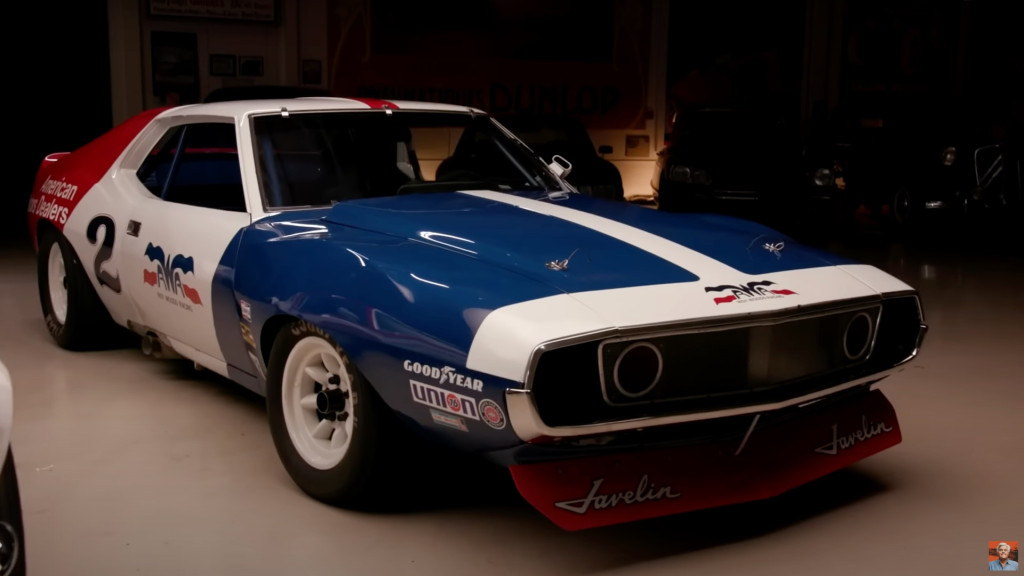The SCCA Trans Am series achieved iconic status in the late 1960s and early '70s. On this episode of "Jay Leno's Garage," Jay Leno, NASCAR commentator Mike Joy, and historic racer Ken Epsman look at some of the cars that made that era of Trans Am racing so special. We learn quite a bit about the history of Trans Am racing along the way.
Attempting to expand beyond amateur racing with a pro series, the SCCA launched Trans Am in 1966. The series initially featured modified production cars in two classes: those with engines displacing less than 2.0 liters, and those with engines larger than 2.0 liters but capped at 5.0 liters or 305 cubic inches.
The latter created an opening for Ford, General Motors, Chrysler, and AMC to field their pony cars, which were just hitting the market at the time. The Ford Mustang, Chevrolet Camaro, Dodge Challenger, Plymouth 'Cuda, and AMC Javelin all raced in the Trans Am series with factory support during this golden age, which continued until 1972. After that, changes to the rules moved Trans Am from its production-based formula.

1971 AMC Javelin Trans Am race car on Jay Leno's Garage
Missing from that list is the Pontiac Firebird Trans Am, which was named after the series, but was unable to compete because its engine exceeded the 5.0-liter maximum displacement set by the rules. Firebirds did race in the Trans Am, albeit with less consistent factory support than the Camaros, and GM paid the SCCA a $5 fee for each Firebird Trans Am road car sold. For a time, that was the SCCA's biggest source of income, Joy notes in the video.
What made Trans Am race cars stand out was their similarity to road cars. The original rules required stock body shells and powertrains, which made the racing interesting and spawned classic homologation specials like the Ford Mustang Boss 302 and Chevrolet Camaro Z/28. Those cars were raced by famous drivers such as Dan Gurney and Mark Donohue, making the Trans Am series a bigger deal in its day than NASCAR, which was still mostly popular only in the South, Joy says.
The rules forced some interesting workarounds, such as the massive oil sump on the Ford Mustang shown here (because dry sumps were illegal), or the use of the base front fascia on the 1970 Camaro racer rather than the fancier Rally Sport version to save weight. Not everything was stock—the Camaro employed a Chevy Impala rear axle to extend its track width—but the cars did at least look that way.
At a time when "win on Sunday, sell on Monday" was still a reliable strategy, this made Trans Am an important marketing tool for automakers. That was particularly true for AMC, which partnered first with Kaplan Engineering, then Penske Racing, and finally the Roy Woods team as an all-in effort to promote its Javelin as an alternative to the Detroit Three pony cars. The effort netted titles in 1971 and 1972, giving AMC and the Javelin a brief moment of glory.
The video ends like most of Leno's video, with a drive in one of the cars. In this case, it's the No. 89 1966 Ford Mustang raced originally by Jim Whelan. It's a treat to hear the 289 with GT40 heads in action on the street.
The Trans Am series still exists today, but the race cars don't have much in common with road cars, and the series has been overshadowed in the U.S. by the likes of NASCAR, Formula 1, IndyCar, and IMSA racing. Yet the cars from that 1966-1972 era are still iconic.